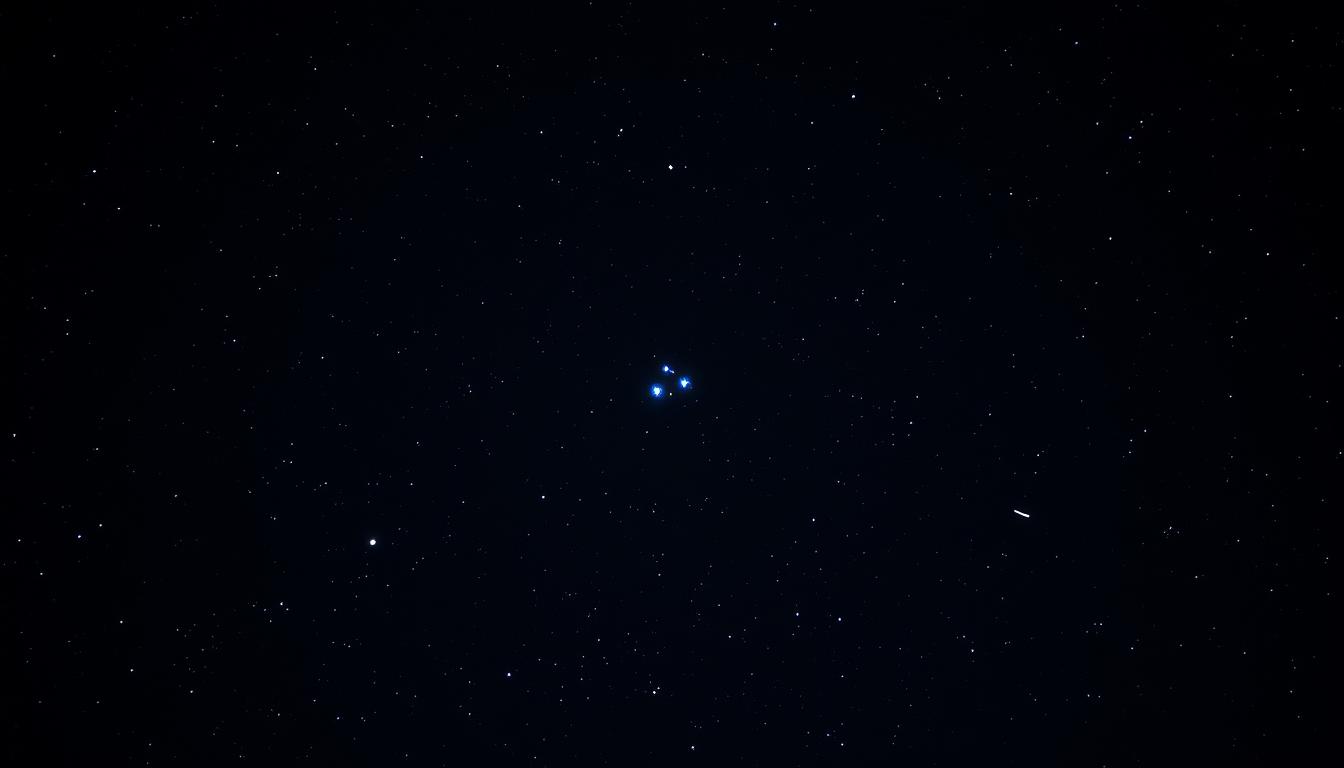Gazing at the night sky, one of the most captivating sights is the Pleiades, a dazzling star cluster just 444 light-years away. Known for its bright blue glow, this young group of stars—only 75 to 150 million years old—has fascinated stargazers for centuries.
Beyond its astronomical beauty, the Pleiades holds deep cultural meaning. From ancient Greek legends to Indigenous traditions, this cluster appears in mythology worldwide. Even today, its six to fourteen visible stars inspire wonder and storytelling.
In this article, we’ll explore the science behind this cosmic gem and its enduring role in human history. Whether you’re an astronomy enthusiast or a mythology lover, the Pleiades offers something extraordinary.
Key Takeaways
- The Pleiades is one of the closest and youngest star clusters to Earth.
- Its blue reflection nebulae make it a stunning sight in the night sky.
- Visible to the naked eye, it typically shows 6-14 stars.
- It holds significant cultural and mythological importance across civilizations.
- This article covers its scientific facts and historical connections.
Introduction to the Pleiades Star Cluster
Among the glittering wonders of the cosmos, the Pleiades stands out as a mesmerizing star cluster. Located in the Taurus constellation, this group of hot, blue B-type stars spans 8 light-years and contains over 1,000 members. Nearly 60% of its systems are binary, making it a dynamic celestial neighborhood.
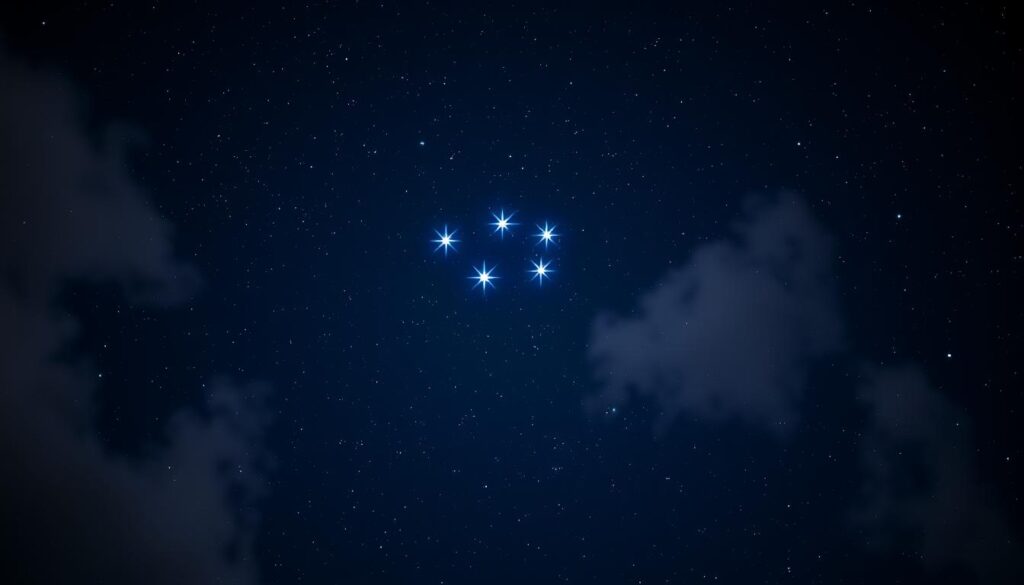
What Are the Pleiades?
Officially cataloged as Messier 45 (M45), the Pleiades is one of the closest open clusters to Earth. Its brightest stars—visible to the naked eye—create a distinctive pattern often mistaken for the Little Dipper. The cluster’s blue glow comes from light reflecting off cosmic dust, a feature that enchants stargazers.
Why Are They Called the Seven Sisters?
The name “Pleiades” traces back to Greek plein, meaning “to sail.” Ancient Mediterranean sailors used its rising to mark safe navigation seasons. Greek mythology tells of seven daughters of Atlas and Pleione, giving rise to the Seven Sisters nickname. Curiously, most people see only six stars—a puzzle inspiring legends worldwide.
Globally, cultures have cherished this cluster under different names:
- Japan: Called Subaru (“gathered together”), its six-star logo mirrors the cluster’s visibility.
- Māori: Matariki signals the New Year, celebrated with festivals and storytelling.
The Astronomical Marvel of the Pleiades
Astronomers and stargazers alike marvel at the brilliant blue glow of the Pleiades. This young star cluster offers more than just beauty—it’s a cosmic laboratory revealing secrets about stellar evolution.
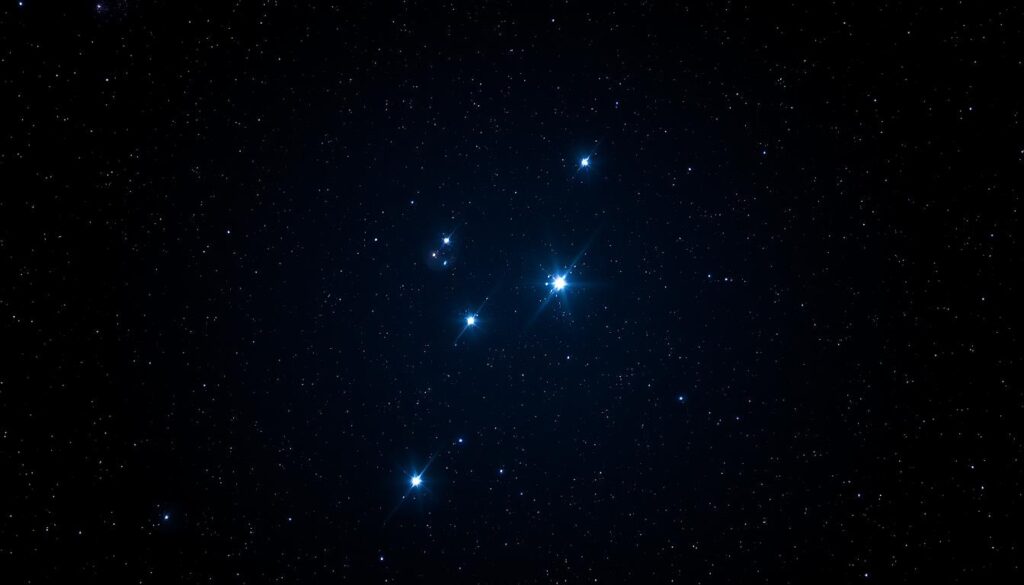
Distance and Location in the Night Sky
Recent data from Gaia DR3 places the cluster 136.2 parsecs (444 light-years) away. You can find it in the northwest region of the constellation Taurus at coordinates:
- Right Ascension: 03h47m24s
- Declination: +24°07′
The cluster moves through space at 18 km/s, drifting through interstellar dust clouds that create its iconic glow.
Age and Stellar Composition
At just 75-150 million years old, the Pleiades contains:
- Hot B-type stars (surface temps reaching 30,000K)
- 800 solar masses total
- 25% brown dwarfs—failed stars that help scientists measure age
Researchers determine its youth by analyzing lithium retention in these brown dwarfs, a chemical clock that fades over time.
The Blue Glow: Reflection Nebulae
That mesmerizing blue haze isn’t from the stars themselves. It’s caused by:
- Unrelated dust clouds intercepting starlight
- Fine cosmic particles reflecting blue wavelengths
- A chance encounter as the cluster moves through space
Despite its current brilliance, astronomers predict the star cluster will disperse in about 250 million years, making now the perfect time to observe this cosmic wonder.
The Pleiades Symbol in Mythology
Bronze Age artifacts reveal our ancestors’ fascination with this star cluster. The 1600 BC Nebra sky disk, Europe’s oldest known star map, prominently features these stars among its celestial symbols. Across cultures, they’ve inspired creation tales, calendars, and spiritual beliefs.
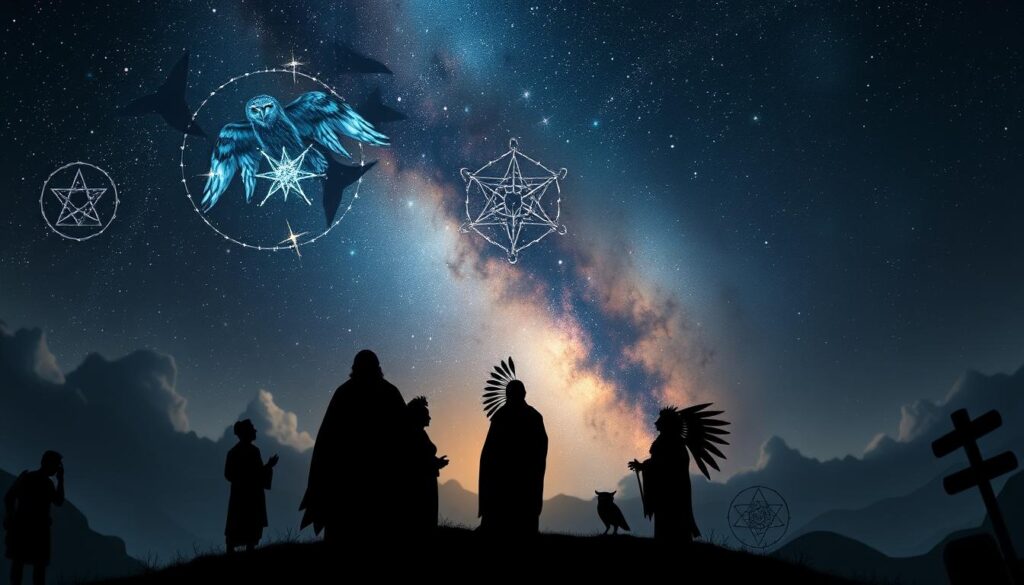
Greek Origins: Atlas and the Seven Sisters
Greek mythology tells of seven daughters of Atlas and Pleione pursued by Orion. Zeus transformed them into stars to protect them, though one sister hides—explaining why most people see only six stars. “The Pleiades…whose stars are these seven maids who weave their orbits in the sky,” wrote poet Aratus.
This legend appears in Homer’s Odyssey and Hesiod’s Works and Days. Farmers used their seasonal appearances to time harvests, showing how stories blended with practical knowledge.
Māori Legends: Matariki and the New Year
For New Zealand’s Māori people, Matariki (the cluster’s name) marks their New Year when it first rises in late May or June. Families gather to:
- Remember ancestors
- Share harvest feasts
- Tell creation stories
The event aligns with winter solstice celebrations across Polynesia. Modern Matariki festivals feature kite flying and astronomy workshops, keeping traditions alive.
Japanese Subaru: Unity in the Stars
In Japan, the cluster is called Subaru meaning “gathered together.” The car company adopted this name and six-star logo to represent five merged firms. This mirrors how six stars visibly unite in the night sky.
From Cherokee tales of seven boys becoming stars to the Quran’s possible reference in Surah An-Najm (“The Star”), these celestial bodies connect humanity. As our privacy policy respects diverse beliefs, so does astronomy honor each culture’s unique perspective on the cosmos.
Cultural Significance Across the Globe
From the vast Pacific to ancient Babylon, the Pleiades have guided civilizations for millennia. This star cluster served as a compass, clock, and spiritual beacon, weaving itself into the fabric of cultures worldwide.
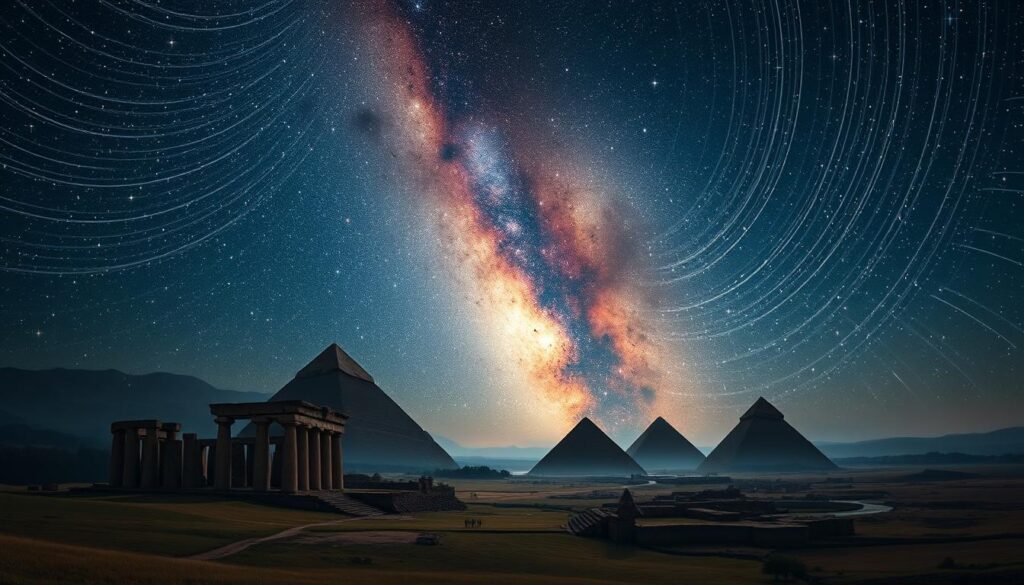
Indigenous Stories and Celestial Navigation
Polynesian voyagers memorized the cluster’s rising to traverse the Pacific. They called it Matariki or Makali‘i, using its position to predict weather and planting seasons. Key navigation techniques included:
- Tracking its nightly movement to maintain course
- Pairing it with other stars like Sirius for long voyages
The Cherokee named it Ani Tsutsa (“The Boys”), linking its appearance to harvest time. Iroquois legends describe the stars as dancing children chased by a bear (the constellation Ursa Major).
The Pleiades in Ancient Calendars
Babylonians recorded the cluster in the calendar text MUL.APIN (627 BC), using it to adjust leap months. Aztecs tied it to Tiānquiztli, their market day cycle. They believed the stars were merchants who became celestial guides.
“Can you bind the chains of the Pleiades or loose the cords of Orion?” — Job 38:31
Biblical and Islamic References
In the Quran (Surah An-Najm), the cluster (al-Thurayya) symbolizes divine guidance. Islamic anwā star calendars began with its heliacal rising. These references show how one star group united the world’s spiritual imagination.
How to Spot the Pleiades in the Night Sky
On crisp winter nights, a tiny dipper-shaped cluster dazzles stargazers—the Pleiades. With an apparent magnitude of 1.6, it’s one of the brightest and most accessible star groups to see without equipment.
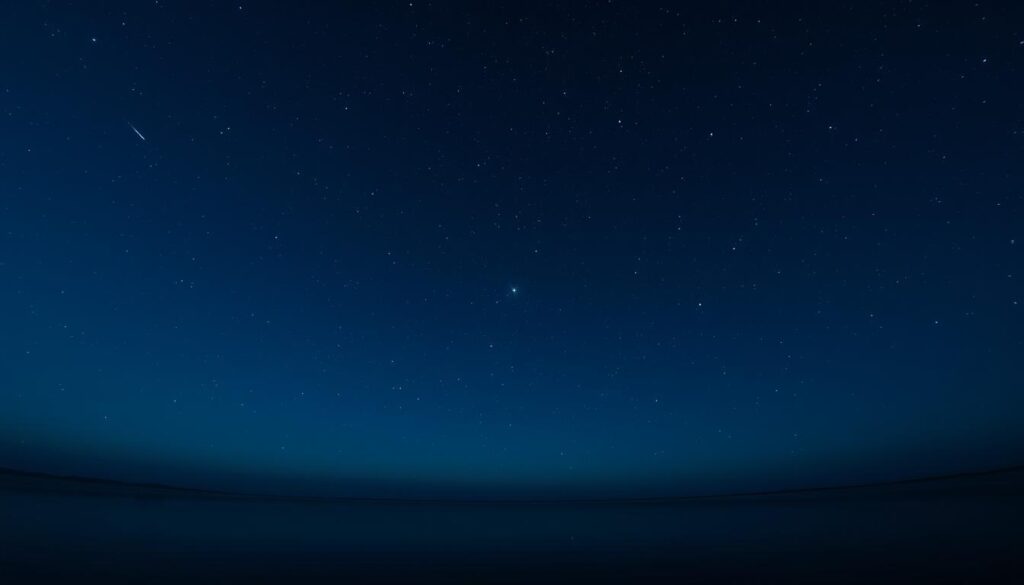
Best Times and Conditions for Viewing
Northern Hemisphere observers get the best views from October to April. Here’s why:
- November–December: The stars stay visible longest, rising at dusk and setting near dawn.
- Dark skies (Bortle Scale 3–4) reveal the blue reflection nebulae.
- Southern Hemisphere? Look between May and August.
Using Constellations as Guides
Lost in the night sky? Follow Orion’s Belt to Aldebaran (Taurus’s brightest star), then scan northwest. The Pleiades sit within the Golden Gate of the Ecliptic, a celestial pathway including the Hyades.
Pro tip: Apps like Stellarium overlay real-time star maps. Point your phone upward to confirm you’ve found the right cluster.
The Science Behind the Pleiades’ Formation
Deep in the cosmic cradle, a spectacular stellar nursery gave birth to one of our sky’s most famous clusters. The Pleiades began as a dense molecular cloud, where gravity pulled gas and dust into a swirling dance. Over 115 million years, this collapse ignited stars, creating the open star cluster we admire today.

Birth of a Star Cluster
Like the Orion Nebula, the Pleiades started in a compact configuration. Key stages of its formation include:
- Molecular Cloud Collapse: Cold hydrogen gas contracted under gravity, fragmenting into protostars.
- Ignition: Nuclear fusion began in the densest regions, lighting up the cluster.
- Blue Stragglers: These unusually young-looking stars hint at past collisions or mergers.
The cluster’s current tidal radius spans 43 light-years. Yet, its gravitational binding energy is too weak to hold it forever. Stars slowly escape, drawn away by galactic tides.
Why the Pleiades Won’t Last Forever
Compared to ancient clusters like M67 (4 billion years old), the Pleiades is a fleeting wonder. Here’s how they differ:
| Feature | Pleiades | M67 |
|---|---|---|
| Age | 115 million years | 4 billion years |
| Stellar Density | High (800 stars) | Low (500 stars) |
| Future | Dispersal in 250 million years | Stable for billions more |
ESA’s Gaia mission maps the 3D structure of the Pleiades, tracking its motion through space. This data helps predict when its stars will drift apart—a reminder to cherish this young cluster while it shines.
The Pleiades in Modern Astronomy
Modern telescopes reveal secrets about the Pleiades that Galileo could only dream of. This young cluster serves as a testing ground for astronomical theories and technologies.
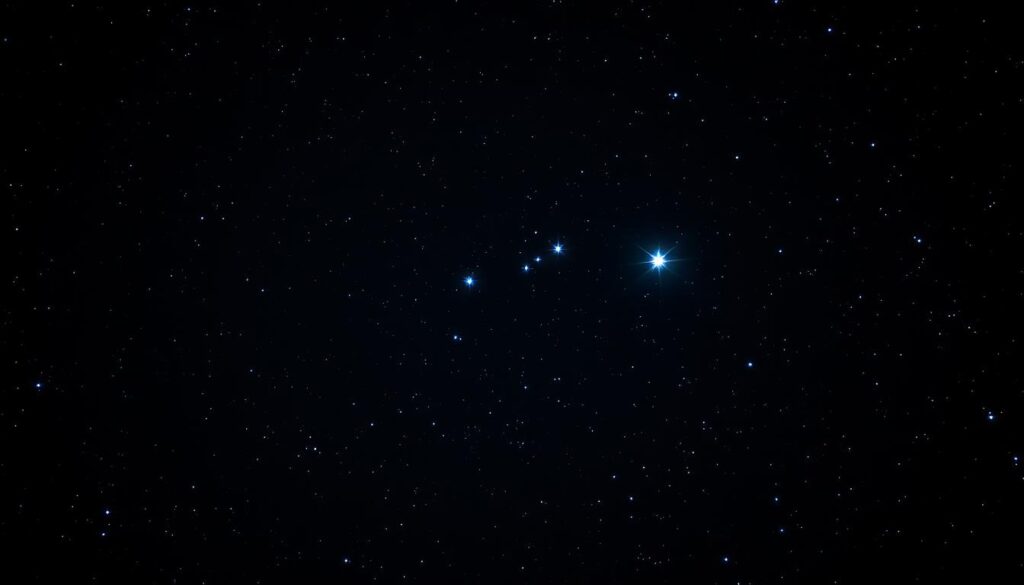
Galileo’s Pioneering Observations
In 1610, Galileo’s Sidereus Nuncius sketches showed 36 stars—far more than the naked eye could see. His crude telescope revealed:
- Multiple stars where ancients saw single points of light
- A dense grouping suggesting gravitational bonds
- The first evidence of its true nature as a star cluster
Solving the Distance Debate
For years, astronomers argued about how far away the Pleiades lies. Key measurements include:
| Method | Distance (pc) | Year |
|---|---|---|
| Hipparcos | 118 | 1997 |
| VLBI | 136.2 | 2014 |
| Gaia DR3 | 135.74±0.10 | 2022 |
Gaia’s precision settled the controversy using parallax measurements across 1.5 billion data points.
Today’s Technological Marvels
The Subaru Telescope’s Hyper Suprime-Cam captures the cluster in unprecedented detail. Its 870-megapixel camera can:
- Detect brown dwarfs fainter than magnitude 25
- Map dust clouds with 0.2-arcsecond resolution
- Search for exoplanets (none confirmed yet)
Meanwhile, NASA’s Pleiades supercomputer—named for the stars—processes cosmic data at 7.25 petaflops. From Galileo’s ink sketches to digital simulations, astronomy keeps unlocking this cluster’s mysteries.
The Pleiades in Art and Literature
Artists and writers have long drawn inspiration from the shimmering stars of this celestial wonder. Its brilliance appears in gold-leaf artifacts, epic poems, and even modern coins—proof of its enduring cultural imprint.
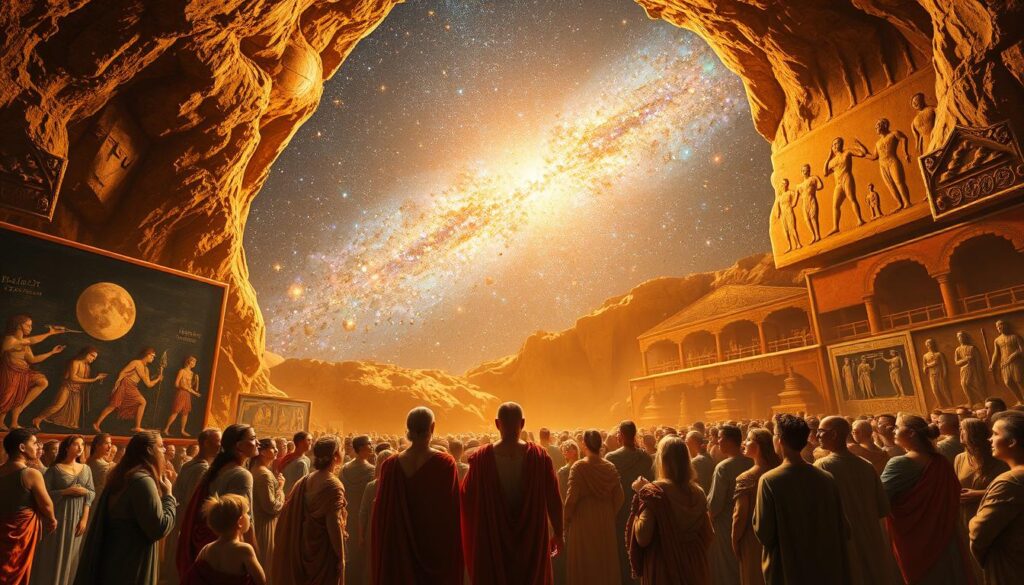
Ancient Artifacts and Celestial Symbols
The 3,600-year-old Nebra sky disk, Europe’s oldest star map, features gold dots believed to depict this constellation. Similarly, Australia’s 2020 $1 coin showcases an Indigenous interpretation, linking the stars to Dreamtime stories.
Key artistic depictions include:
- Greek pottery: Showcasing the Seven Sisters alongside Orion
- Japanese woodblocks: Subaru clusters in ukiyo-e prints
- Māori carvings: Matariki patterns symbolizing renewal
From Shakespeare to Van Gogh
Literature brims with references to these stars. Shakespeare’s A Midsummer Night’s Dream alludes to them as “seven stars,” while Tolkien’s Lord of the Rings names them Remmirath, the “netted stars.”
Rabindranath Tagore wove them into Bengali poetry as Kṛttikā, tying them to themes of love and separation. Even Van Gogh’s Starry Night may echo their swirling form—though he painted the Hyades nearby.
| Work | Artist/Author | Connection |
|---|---|---|
| Works and Days | Hesiod | Agricultural calendar |
| Seven Sisters series | Lucinda Riley | Modern myths retold |
| Nebra Sky Disk | Bronze Age artisans | Earliest known depiction |
Across the world, this star cluster continues to ignite creativity—bridging ancient wisdom and contemporary imagination.
Photographing the Pleiades: Tips and Tricks
The blue glow of these stars presents unique challenges and rewards for photographers. Whether you’re using a DSLR or smartphone, capturing their celestial beauty requires specific techniques.

Essential Equipment for Stellar Shots
André Vilhena’s 2023 APY-shortlisted image proves what’s possible with proper gear. Start with these basics:
- Lens: 85mm or longer (200mm ideal for detail)
- Tracker: Rotating mount for long exposures
- Filters: Hydrogen-alpha enhances nebulae contrast
“Shoot in RAW and bracket exposures—the dynamic range surprises even pros.”
Mastering Camera Settings
Balance sensor sensitivity with noise control using these starting points:
| Setting | Value | Purpose |
|---|---|---|
| ISO | 1600-3200 | Captures faint light without overwhelming noise |
| Aperture | f/2.8-f/4 | Maximizes light gathering |
| Exposure | 30-120s | Prevents star trails (untracked) |
Revealing the Reflection Nebulae
The wispy blue clouds around the cluster need special attention:
- Shoot during new moon phases for darkest skies
- Stack 30+ exposures (use Sequator/DeepSkyStacker)
- Process with curves to enhance faint details
Share your results with #PleiadesSeason—this celestial target shines brightest from October to April. For more on enhancing your cosmic perception, explore our guide on opening your third eye to deepen your connection with the night sky.
Mysteries and Unsolved Questions
Ancient skywatchers noticed something peculiar about this star cluster—counts never matched. From Babylonian records listing seven “mul.MUL” to Greek tales of vanishing sisters, discrepancies persist in modern astronomy too. These cosmic puzzles reveal how much we still don’t understand about our night sky.
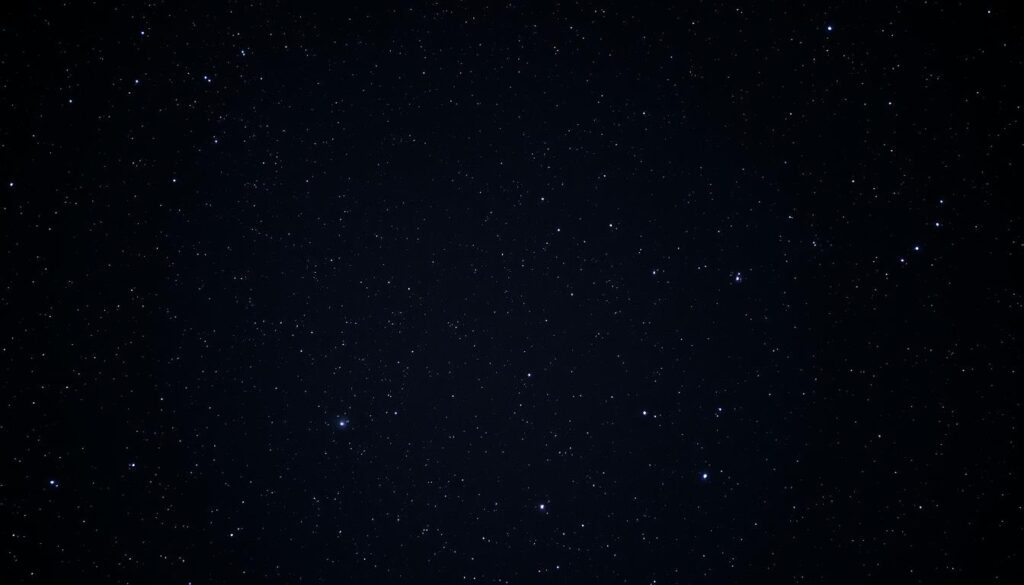
The “Lost” Seventh Sister
Most people see six stars despite the “Seven Sisters” name. Science offers clues:
- Pleione, a variable star (magnitude 5.09), dims below visibility
- Proper motion studies show HD 23753 drifting away
- Babylonian texts suggest atmospheric changes affected counts
Cultural myths explain it differently. Greek lore claims Electra hid mourning Troy’s fall, while Māori traditions speak of one star remaining earthbound.
Debates Over Distance Measurements
For decades, astronomers argued about how far the cluster lies from Earth. Key conflicts include:
| Method | Distance (light-years) | Year | Issue |
|---|---|---|---|
| Hipparcos | 385 | 1999 | Systematic errors |
| VLBI | 444 | 2014 | Radio wave limitations |
Gaia space telescope data now confirms ~444 light-years, but questions remain about dust cloud interference. Some theorists even propose dark matter lensing could skew measurements—a tantalizing space mystery awaiting resolution.
The Pleiades and Human Connection
Across continents and centuries, one star cluster has united humanity under shared wonder. This open cluster appears in creation myths from Australia to the Andes, proving how celestial beauty transcends borders.
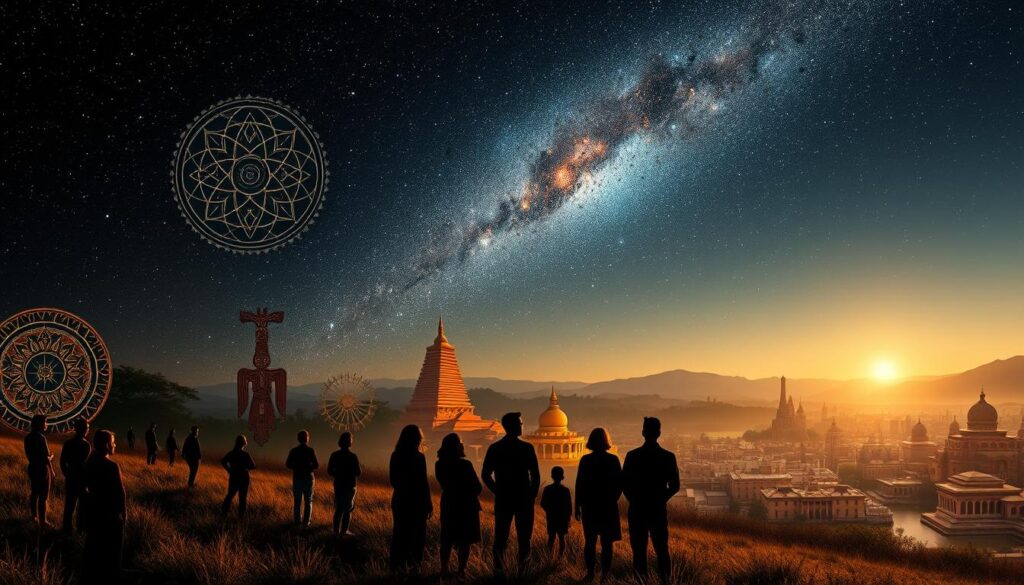
Why This Cluster Captivates Us
Psychologists note our brains naturally seek patterns—explaining why so many cultures saw human forms in these stars. Carl Jung might call this the “sister archetype,” a universal symbol of unity.
Modern science confirms the cluster’s pull. Its blue giants shine 40,000 times brighter than our sun, making them visible even in light-polluted cities. This accessibility helps explain its global reach.
“The Pleiades represent humanity’s shared sky heritage—a reminder that we all gaze at the same stars.”
Shared Stories Across Millennia
From Babylonian clay tablets to Māori oral traditions, 160+ cultural names document this cluster’s impact. Common threads emerge:
- Timekeeping: Used in 26th century BC Mesopotamian calendars
- Navigation: Polynesian voyagers followed it across the Pacific
- Agriculture: Linked to planting seasons worldwide
Today, its influence continues. The Subaru logo mirrors the six visible stars, while Mitsubishi’s three-diamond mark recalls its Japanese name Mutsuraboshi. Even music festivals adopt “Seven Sisters” themes, proving ancient stars still inspire.
| Culture | Name | Meaning |
|---|---|---|
| Greek | Pleiades | Seven sailing daughters |
| Aboriginal | Kungkarangkalpa | Seven sisters chased by a man |
| Hindu | Kṛttikā | Six mothers who raised the war god |
As astrotourism grows, dark sky reserves like New Zealand’s Aoraki Mackenzie welcome visitors seeking this celestial touchstone. Whether through science, art, or love of nature, the cluster still connects people worldwide—just as it has for millennia.
Conclusion: The Enduring Legacy of the Pleiades
Few cosmic sights bridge ancient mythology and modern science like this glittering group. For millennia, the star cluster has guided sailors, inspired artists, and puzzled astronomers with its celestial dance.
Today, the James Webb Space Telescope studies its young stars, uncovering secrets about stellar birth. Meanwhile, backyard stargazers can spot it easily—look northwest of Orion in the night sky.
Mark your calendar for 2025, when its perihelion offers especially bright views. As the Māori say: “Matariki ahunga nui”—the Pleiades bring abundance.

